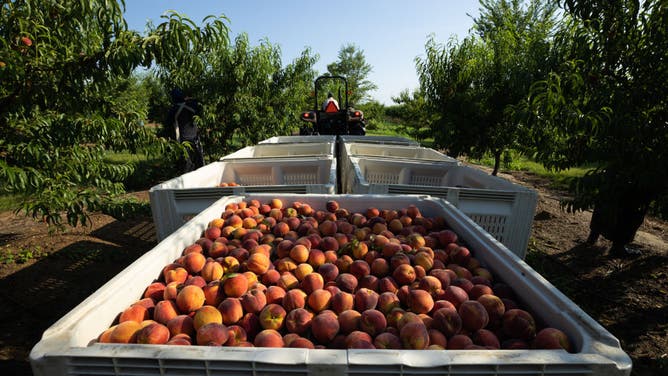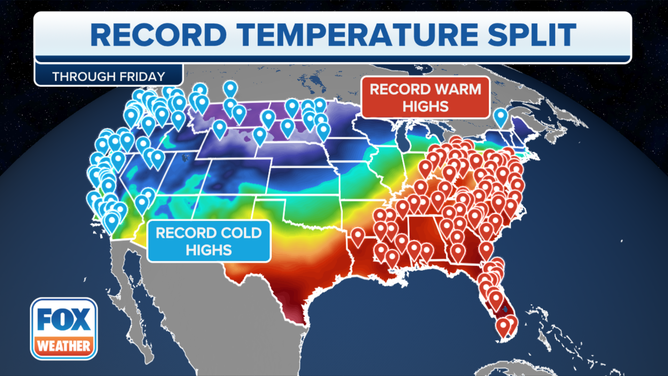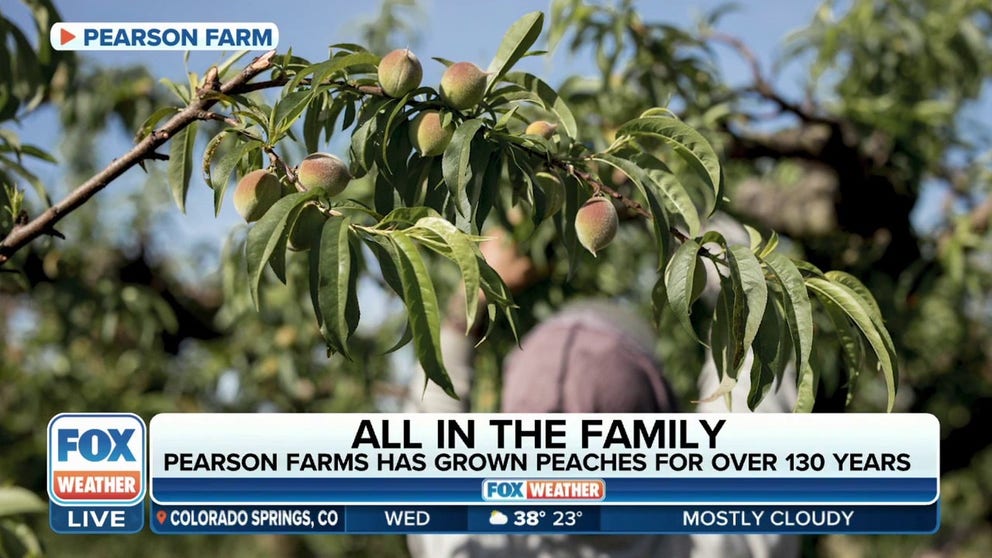Will the lack of cold weather impact the peach harvest?
California annually produces the majority of the peaches in the U.S. In 2017, the Golden State produced 56 percent of the county’s fresh peach crop and more than 96 percent of processed peaches. South Carolina, Georgia and New Jersey are also significant producers.
Georgia peach farm begins early harvest due to warm winter
Lawton Pearson, Founder and Farmer of Pearson Farm, says the warm weather this winter is forcing an early bloom of their peaches and they've begun an early harvest this season.
A fruit that many consider a southern delicacy has faced the challenges of a warm winter across Georgia, but agriculture experts believe due to production in other regions and increasing adaptations by farmers that the upcoming harvest should not feel drastic impacts from the climate.
Similar to apples, pears and other flowering trees, peaches require a sizable amount of cold weather in order to produce flowers and yield fruit.
Agricultural experts refer to time spent under a temperature threshold as chill hours, and many varieties of peaches require hundreds of hours below 45 °F to flourish.
Aside from an arctic front in December that brought a record chill, Georgia and much of the South have seen a warmer-than-average season with fewer than-normal chill hours.
According to the University of Georgia’s College of Agricultural and Environmental Sciences, many communities around the Peach State are 100 to 200 hours below last season’s levels, with no sight of winter’s return.
Despite the lack of cold, Dario Chavez, an associate professor at UGA who specializes in peach physiology and breeding, believes consumers won’t strike out when harvesting starts in May.
"Things can change pretty dramatically, but I feel positive about the season," Chavez said.
Expectations for the state’s upcoming season are for amounts to be near or slightly below the output of 2021-22.
STRAWBERRY OUTLOOK DEEMED ‘PROMISING’ DESPITE IMPACTS FROM HURRICANES, ATMOSPHERIC RIVERS
The peach expert pointed towards both cloudy and rainy events as not being taken into account by chill hours and farmers not planting varieties of peaches that require many days of cool temperatures.
Chavez believes days when sunshine and heat are minimalized, the number of chill hours required for budding could be reduced.
The lowering of the required chill hours, in combination with farmers’ advancements, means the state’s harvesters could be not far off from the annually produced 130 million pounds.
"So, not long ago, they used to grow fruit that needed 900 to 1,000 chill hours. Now, they don’t grow those anymore. There are 40 to 60 varieties. So that means if you’re going to the supermarket and buying peaches, you could be buying a different variety every time," said Chavez.
During episodes of reduced production, peach enthusiasts look to states such as California, New Jersey and South Carolina to help ensure there isn’t a windfall.
According to U.S. Department of Agriculture data, the Golden State produced 56 percent of the county’s fresh peach crop and was responsible for more than 96 percent of processed peaches in 2017.
With California under the barrage of atmospheric river events that impacted crops from carrots to strawberries, there is concern about how inclement weather will play a role in the peach harvest season.
Chavez has not been in contact with growers on the West Coast but said drainage is key in ensuring minimal disruptions.
"Peaches don’t like to have their feet wet, so drainage is important," Chavez stated.
OLIVE OIL PRICES CLIMBING AFTER HEAT, DROUGHT IN EUROPE LEADS TO POOR HARVEST, SHORTAGE

A tractor transports crates of peaches during a harvest in Reynolds, Georgia, US, on Friday, July 8, 2022. Despite their ubiquitous association with the state, peaches are no longer Georgia's biggest fruit crop. As temperatures rise, growers and researchers are working to ensure that climate change doesn't kill the industry, Modern Farmer reports.
(Dustin Chambers/Bloomberg via Getty Images / Getty Images)
Peaches are susceptible to disease
This sweet and juicy crop is susceptible to diseases that range from fungal rot to bacteria that stunts growth.
A reemerging disease that experts at UGA are keeping a close eye on is phony peach disease (PPD).
University experts said PPD is a reemerging disease in the Southeast and can lead to significant losses if left unattended to grow rampant.
Bacteria is said to primarily grow in roots and lead to poor-quality fruit.
There are no known chemical solutions to prevent the spread of PPD, and experts advise removing infected trees to reduce propagation.

Record highs across country
(FOX Weather)
